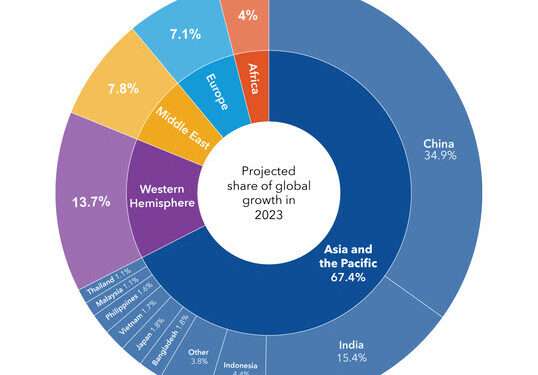Asia poised to drive global economic growth, boosted by China’s reopening
Our latest Regional Economic Outlook describes the resilience of the world’s most dynamic region and important challenges facing its policymakers. Growth in Asia and the Pacific is forecast to accelerate to 4.6 percent this year from 3.8 percent last year.
- Advertisement -
Asia and the Pacific is a relative bright spot amid the more somber context of the global economy’s rocky recovery.
As the Chart of the Week shows, the region will contribute about 70 percent of global growth this year—a much greater share than in recent years.
- Advertisement -
- Advertisement -
Our latest Regional Economic Outlook describes the resilience of the world’s most dynamic region and important challenges facing its policymakers. Growth in Asia and the Pacific is forecast to accelerate to 4.6 percent this year from 3.8 percent last year.
- Advertisement -
The main development has been the reopening of China, where surging consumption is boosting growth across the region despite weaker demand from the rest of the world. Risks to the outlook include spillovers from greater-than-expected US monetary policy tightening and supply chain disruptions associated with geoeconomic fragmentation.
But the region also faces important challenges. In the short term, monetary and fiscal policies will need to remain tight to bring inflation durably back to central bank targets and stabilize public debt. An integrated policy response using all available tools will be needed to manage global shocks. While Asia’s financial systems haven’t seen major impacts following recent banking turmoil in the United States and Europe, they need to be carefully monitored given high leverage among households and corporates.
In the longer term, the Chinese economy that has been the primary engine of regional and global growth for decades is expected to slow considerably in the face of unfavorable demographics and a productivity slowdown. The region should prioritize structural reforms to boost long-term growth, including through innovation and digitalization, while accelerating the green energy transition.
Source: norvanreports.com
- Advertisement -


